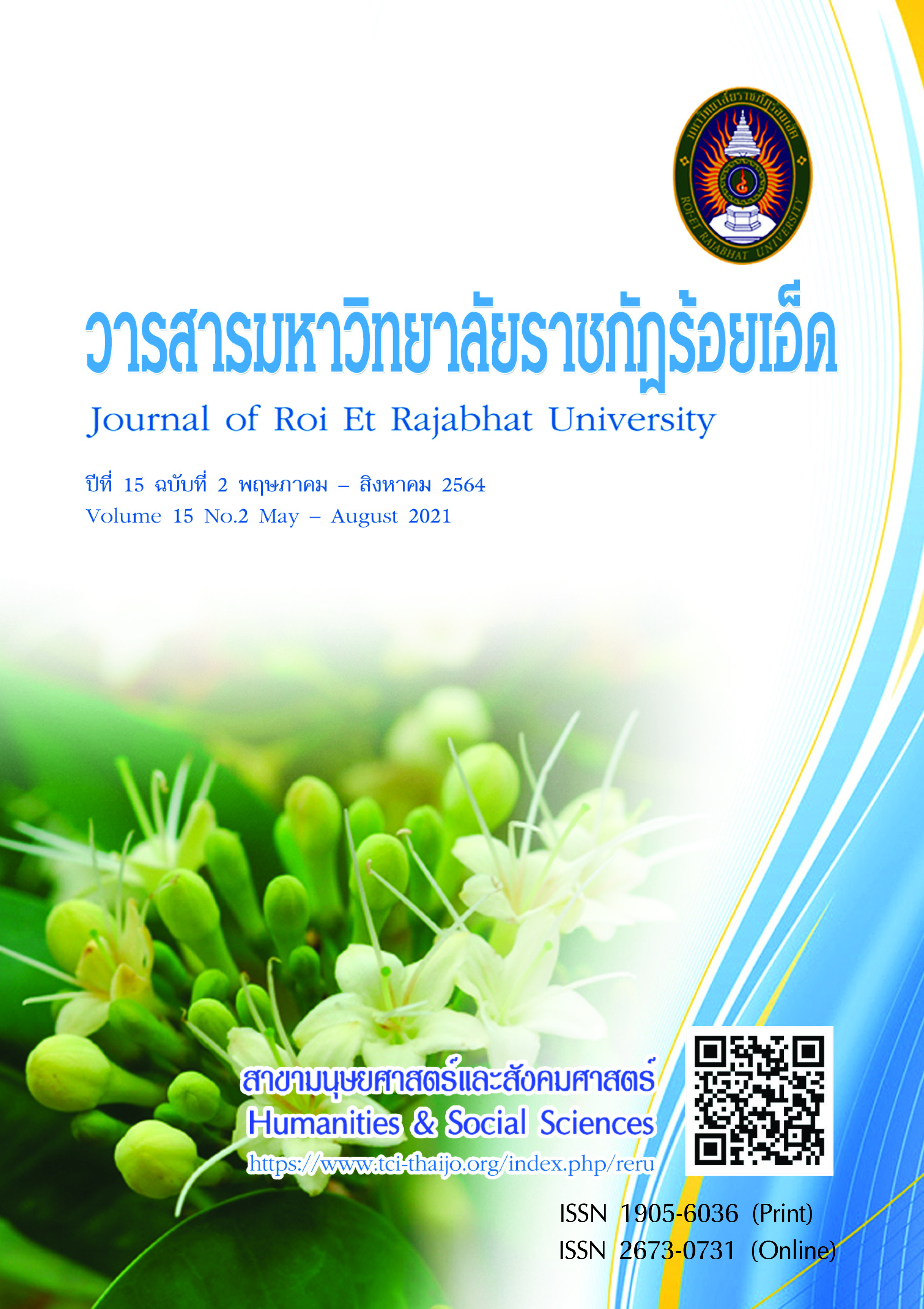Effects of Creativity Style and Grouping Style in Learning by Applications for Education using Problems based on Creative Problem Solving of Undergraduate Students
Keywords:
Creativity style, Applications for education, Creative problem solvingAbstract
This research was to study effects of creativity style and group learning style in learning by education applications using problems based on creative problem solving of undergraduate students. The samples were 80 undergraduate students enrolled in Innovation and education information technology course at the second semester of academic year 2019. The measurement of creative styles was used to measure two different types of students in this study: innovative style and adaptive style. The research instruments were: 1) a measurement of creative styles, 2) lesson plans, 3) a creative problem solving test and 4) a learning achievement test. The data were analyzed using the analysis of two-way MANOVA. The results found that: 1. The students who have different creativity styles, learning by education applications using problems based had no statistically significant difference on creative problem solving and learning achievement at .05 level. 2. The students who have different group learning style, learning by education applications using problems based had statistically significant difference on creative problem solving and learning achievement at .05 level. 3.There was no interaction between creativity style and group learning style by education applications using problems based on creative problem solving and learning achievement at .05 level of significance
References
Barrows, H.S. and Bennett, K. (1982). Experimental Studies on the Diagnostic (Problem-Solving) Skill of
the Neurologist : Their Implications for Neurological Training. Archives of Neurology, 26(3),
-277.
Bissola, R. and Imperatori, B. (2011). Organizing individual and collective creativity: Flying in the face of
creativity clichés. Creativity and Innovation Management, 20(2), 77-89.
Chaisak, M. (2009). Creative development in nursing administration. Academic Articles of Nursing, 27(8), 164.
Good, T., and Brophy, J. (1980). Education Psychology: A Realistic Approach. (2nd ed.). New York: Holt,
Rinehart & Winston.
Hmelo-Silver, C.E., and Barrows, H.S. (2006). Goals and Strategies of a Problem-based Learning
Facilitator. Interdisciplinary Journal of Problem-Based Learning, 1(1), 1.
Haimowitz, N.R. and Haimowitz, M.L. (1973). “What Makes Them Creative?” in M.L. Haimowitz and
Haimowitz, eds, Human Development. New York: Thomas Y. Crowell Company.
Jake, S. (2009). Kirton’s Adaption-Innovation Theory: Managing Cognitive Styles in Times of Diversity
and Change. Emerging Leadership Journeys, 2(1), 66-78.
Kirton, M.J. (1994). A theory of cognitive style. Adaptors and Innovators: Styles of creativity and problem
Solving (2nd ed.). London: Routledge.
Kirton, M.J. (1976). Adaption and Innovation: A description and measure. Journal of Applied Psychology,
(5), 622-629.
Kirton, M.J. (1999). The Kirton Adaption-Innovation Inventory. Public Personnel Administration, 19(2), 18-31.
National Education Act of B.E. (1999). National Education Act: An Education Reform Act for Future
Development of the Thai People. Office of the National Education Commission. Office of
the Prime Minister, Thailand.
Orsirichaivait, O. (2003). The study of Characteristics and relationship of creativity’s style, Emotional
Quotient and the Small Business Entrepreneur’s Success in Stationery Enterprises. Master’s
thesis. Master’s of Business Administration (Industrial Administration and Development).
Bangkok: Thammasat University.
Pirunnet, P. (2008). Study of relationship between supervisor's styles of creativity, transformational leadership and effectiveness of supervisors in an industrial
manufactory at Samuthsakorn. Master’s thesis. Master of Arts (Industrial and Organizational
Psychology. Bangkok: Thammasat University.
Reilly, D.E. and Oermann, M.H. (1990). Behavioral objectives: Evaluation in nursing (3rd ed.). Pub. No.15-2367.
New York: National League for Nursing.
Torrance, E.P. (1979). The Search for Satori and Creativity. New York: Creative Education Foundation.
Wichitwechkarn, S. (2017). Comparison of academic achievement advanced using office programs
Between teacher-centered teaching and teaching by group process technique as a friend as
a teacher of Diploma students 1st year Retail Business Management Program Panyapiwat
Technological College. Classroom Action Research. Mueang Nonthaburi: Panyapiwat
Technological College.
Downloads
Published
How to Cite
Issue
Section
License
บทความที่ได้รับการตีพิมพ์เป็นลิขสิทธิ์ของวารสารมหาวิทยาลัยราชภัฎร้อยเอ็ด
ข้อความที่ปรากฏในบทความแต่ละเรื่องในวารสารวิชาการเล่มนี้เป็นความคิดเห็นส่วนตัวของผู้เขียนแต่ละท่านไม่เกี่ยวข้องกับมหาวิทยาลัยราชภัฎร้อยเอ็ด และคณาจารย์ท่านอื่นๆในมหาวิทยาลัยฯ แต่อย่างใด ความรับผิดชอบองค์ประกอบทั้งหมดของบทความแต่ละเรื่องเป็นของผู้เขียนแต่ละท่าน หากมีความผิดพลาดใดๆ ผู้เขียนแต่ละท่านจะรับผิดชอบบทความของตนเองแต่ผู้เดียว





